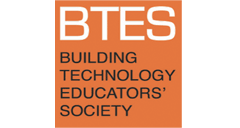Big Glue! Testing the Scalability of Adhesives in Architecture and Design
Author ORCID Identifier
DOI
https://doi.org/10.7275/9exb-rx09
Abstract
This paper documents the questions, methods and outcomes of “Big Glue,” a research collaboration among students and faculty from Cal Poly, San Luis Obispo’s chemistry and architecture departments that explores the potentials of structural adhesives in architecture and design. The project asks how adhesives can be more broadly used as work increases in size from the scale of models to full-scale construction.
Our focus is on aluminum structures. We looked at existing adhesive use in construction and in the automotive industry, where adhesives are increasingly used on aluminum and aluminum composites to reduce weight and consequently increase fuel efficiencies. We see potential overlaps between automotive and architectural applications of adhesives in sheet metal structural skins.
We began at a small scale to get acquainted with adhesives and to test using bonded joints in applications that would typically be welded or mechanically fastened. Our team formulated custom adhesives based on parameters we defined as specific to architecture and construction, then tested this lab formulation and other adhesives on glued joints at three scales—extra small, small and medium—in the form of test coupons, a “ravioli” structure, and furniture.
Working at the scale of furniture allowed us to test material interactions on load bearing seams that are structurally analogous to larger scale architectural applications. Using adhesives instead of welds or mechanical fasteners allowed us to work more fluidly between scale models, digital simulations, and final products. This research lays the groundwork for scaling up to large and extra-large projects.
Recommended Citation
White, Emily and Sapper, Erik
(2019)
"Big Glue! Testing the Scalability of Adhesives in Architecture and Design,"
Building Technology Educator's Society: Vol. 2019
Caryn Brause, Peggi L. Clouston, Naomi Darling (Eds.), Amherst, MA, 2019.
https://doi.org/10.7275/9exb-rx09
Available at:
https://scholarworks.umass.edu/btes/vol2019/iss1/26

